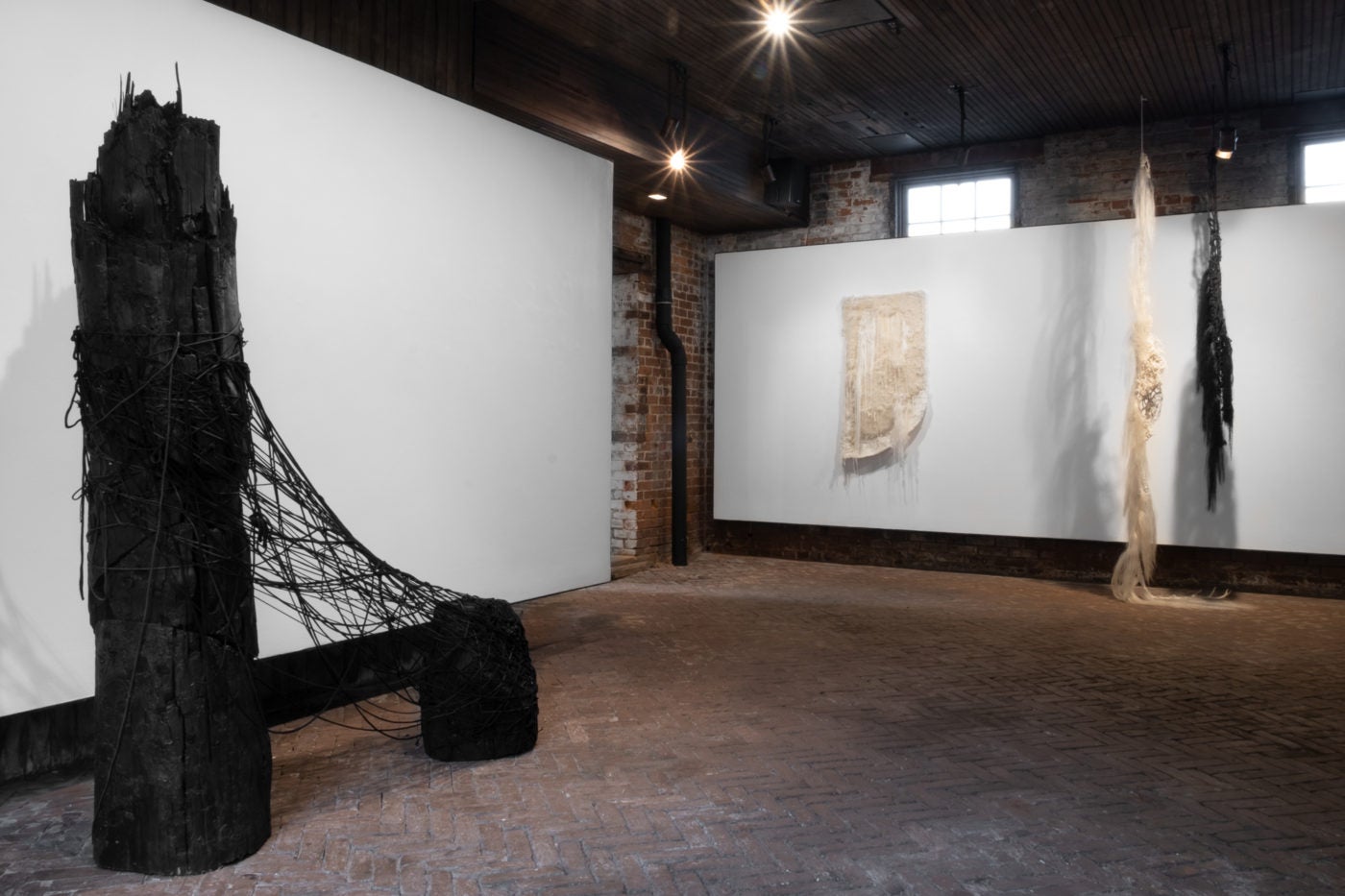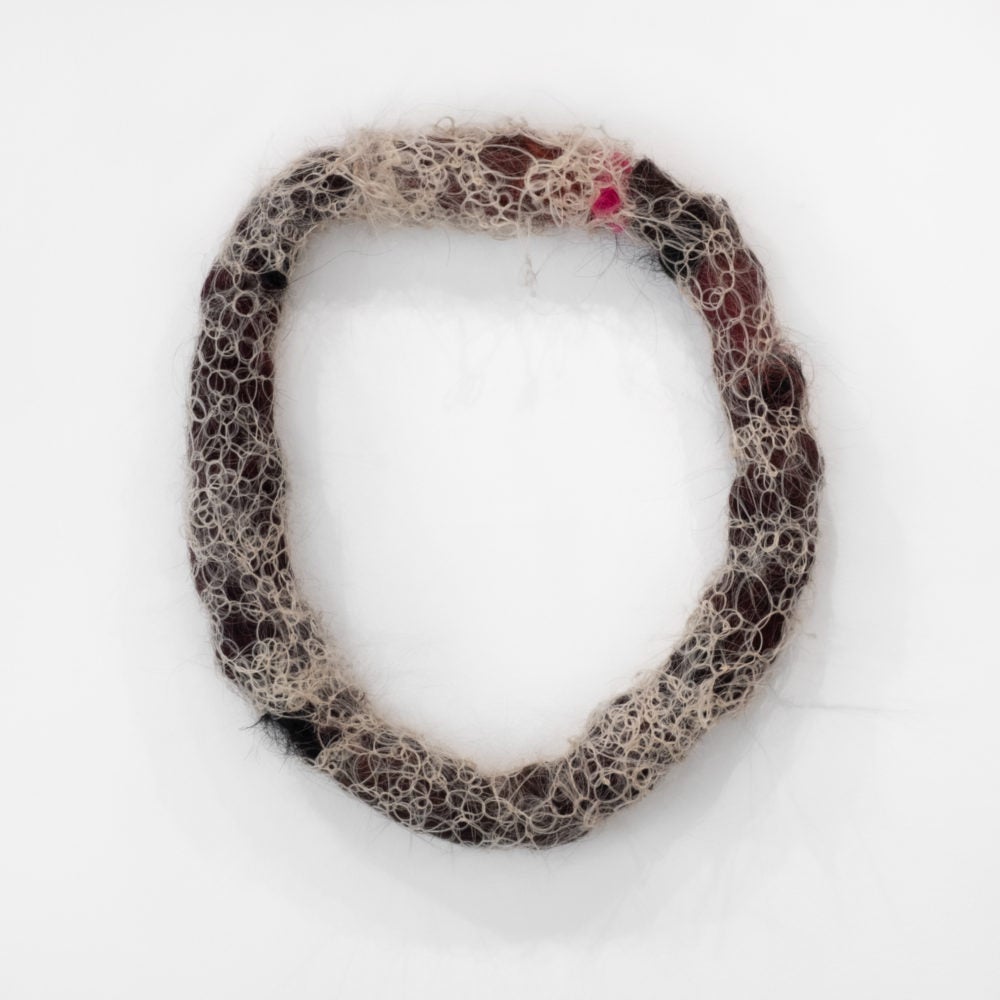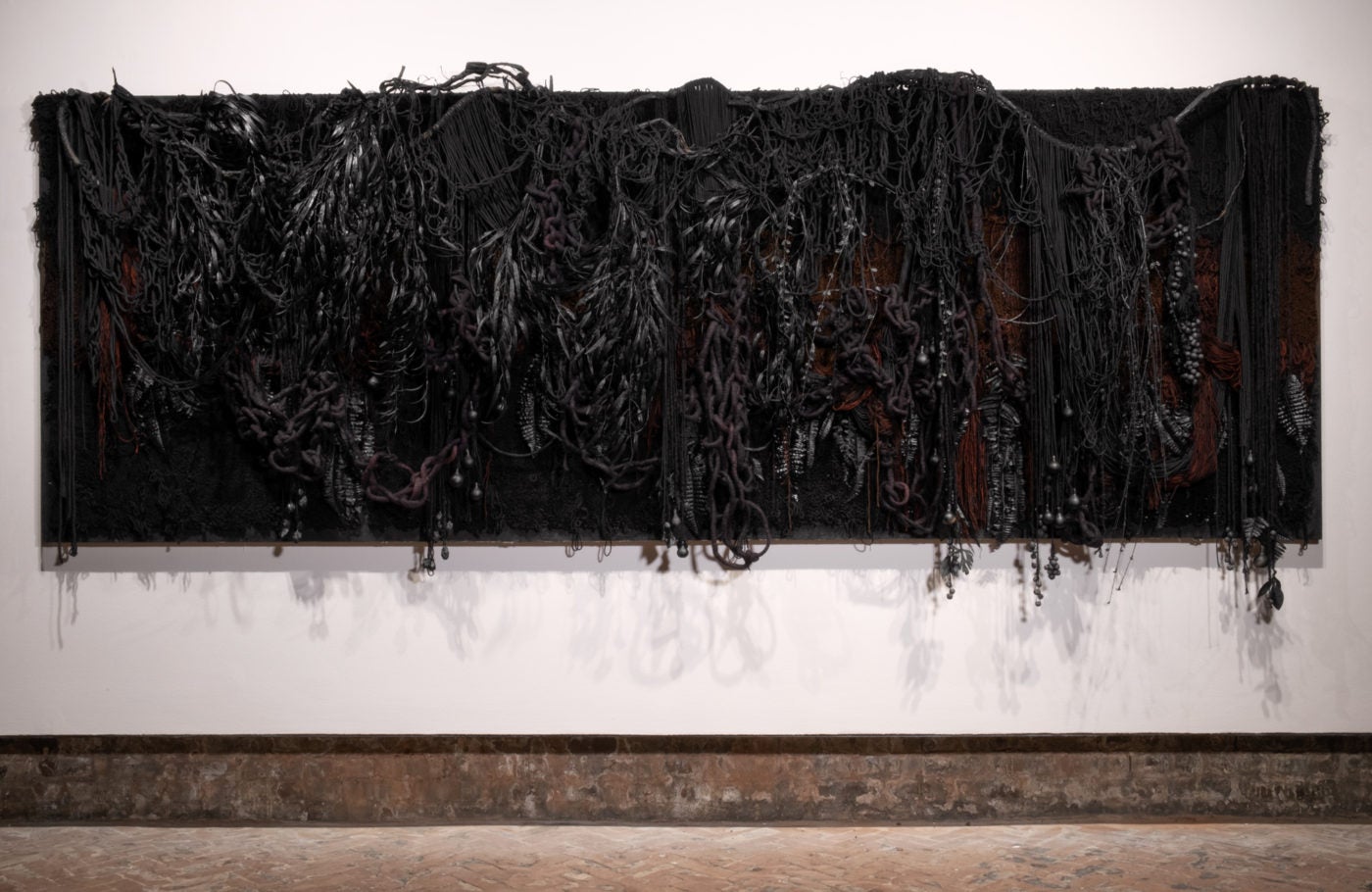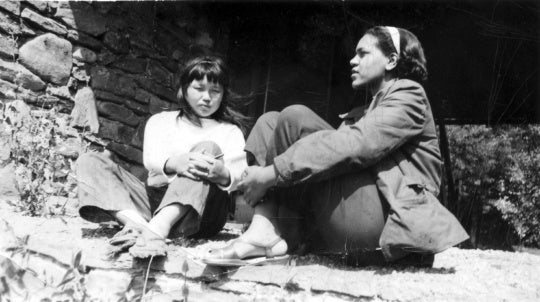
Late last winter, I spent my Tuesday evenings perched at the edge of an uncomfortable bench, learning to weave. I watched my patterns emerge with the unbridled optimism of a delighted novice after each wobbly pass of the shuttle. Made of cheap beginner’s wool, my tea towels, table runners, and scarves packed down into simple cartographies of weft and warp. Weaving is hard—an ancient negotiation between machine, technique, and labor that offers a series of practical creative choices. It is a process of counting, charting, and measuring, of unifying a series of delicate threads into an increasingly strong whole. While I could barely produce a simple twill, I found pleasure in glimpsing the scope of fibers’ physical potential through my casual participation in the ancient craft. Weaving also charts a passage of time, each pass of the shuttle settling new layers of sediment.
While longtime Atlanta artist Sonya Yong James’s beautifully textural solo exhibition Loud Magic at Whitespace only features some traditional weaving, her command of fiber in forming a series of dimensional landscapes, plush tapestries, and cascading pathways pushes each work to spectacularly delicate material extremes. The most compelling work in Loud Magic may also be its most subtle. Passing by the rounded grandeur of Mortal Coil and Free Animal or leaving aside, for a moment, the deep encompassing darkness of I know a song of the colors where I live…does it know a song of me? might lead you to Ultima Thule. Aptly situated at the doorway between Whitespace’s two galleries, the plush textures built by layers of stitched, knotted, and woven bone-white fibers in Ultima Thule come together, as the name suggests, into abstract cartography.
The phrase “Ultima Thule” comes in the first thirty lines of the Georgics of Virgil, the second epic by the famous ancient poet, and approximately translates to “uttermost” or “furthermost” Thule. Referenced in ancient accounts as far back as the fourth century BCE, Thule was considered the northern-most region, just beyond the borders of the known Greek and Roman world, the place where the sun went to rest. Variously associated at progressing historical moments with Greenland, Iceland, Norway, and parts of Scotland and Ireland, Thule is generally agreed—both cartographically and in metaphorical accounts—to denotate an place of known existence but of an undiscernible and historically evolving nature.
Whether or not James’s Ultima Thule is a representation of the actual location of Thule—indeed, it is vaguely the same shape as Greenland—is only part of the point. Instead, perhaps, Ultima Thule articulates the precarity of location-setting or mapping across time, a theme that pervades the exhibition and one that fiber is mythologically consigned to tackle.

The most famous associations between fiber and time come from, of course, stories about the Fates or Pacrae—we’ll stick with the Roman names since we’ve already committed to Virgil—the three goddess who dictated the lifespan of a person using a single thread. The thread of life was spun by Nona, measured by Decima, and cut by Morta at the end. While paintings depict the thread of life as a single, unblemished line, I’ve always preferred to imagine it as a knotted and winding rope or like James’s Prayers, hung from the ceiling as a cascading accumulation of tangled roseries, in which each handmade white clay bead is a tangible prayer, a singular moment. Mortal Coil, a loop threaded together by coiled and entwined white horsehair, looks as though it could be a single thread to be snipped by Morta. James’s delicate handling of materials shapes a precarious state that is strongly conveyed by the rather miraculous construction of the work. As in traditional weaving, Mortal Coil and Prayers chart a passage of time through evident labor and fragile structure, each system threatened by collapse with the wrong tug of a thread.
Shown in a former carriage house used for stabling horses, James’s enormous installation Free Animal stitches together the building’s historical purpose and contemporary function. Woven of black, white, and gray horsehair, the massive ring appears as a delicate, contradictory horse collar. Accompanied by a track by JD Walsh that layers ambient sounds with distinctive audio of trotting horses, Free Animal becomes the grounding atmospheric element of the exhibition.

On an individual level, each work in Loud Magic is rich with subtle details and implied mythologies. Despite the slight unevenness of the exhibition—there is a minor rift between works that directly respond to the surrounding context, such as Free Animal, and those concerned with a broader theoretical framework—James’s command of her materials and her eye for minute details chart a surprisingly moving and imaginative experience across textures and time.
Sonya Yong James’s solo exhibition Loud Magic is on view at Whitespace in Atlanta through October 19.




